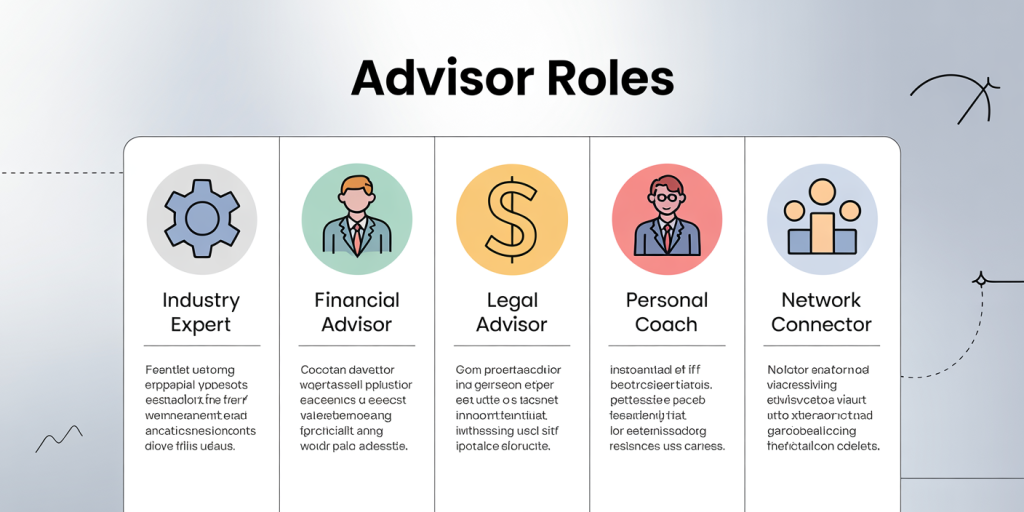How to Create Your Personal Board of Advisors (Yes, Really!)
Anúncios
In a world that is more interconnected and fast-moving than ever before, navigating your career, business, or personal growth can feel like steering a ship through a storm. Even the most successful entrepreneurs and leaders don’t travel this journey alone. Instead, many lean on what’s called a “Personal Board of Advisors” (PBA) — a curated group of trusted individuals who provide diverse insights, guidance, and support. While commonly associated with corporate governance, the concept of a personal advisory board is gaining momentum among professionals and creatives alike.

Having a Personal Board of Advisors is not merely about seeking advice when problems arise; it’s a proactive strategy for sustainable success. This article delves into how you can create your own Personal Board of Advisors, highlighting practical steps, tangible benefits, and future trends that make assembling this team a smart decision for anyone serious about personal and professional growth.
Anúncios
Why You Need a Personal Board of Advisors
The idea of having a circle of trusted advisors is not new. CEOs of Fortune 500 companies often rely on their board of directors to provide strategic advice, challenge assumptions, and open doors. However, the concept is increasingly relevant for individuals as well.
A study by Harvard Business Review highlighted that individuals with robust advisory networks report 33% faster career advancement and 54% higher job satisfaction. This is because advisors offer more than just advice—they provide perspective, accountability, and access to networks. For example, Richard Branson, founder of Virgin Group, credits key advisors for helping him pivot his business strategy multiple times, showing the power of expert input.
Most importantly, a personal advisory board helps combat one of the biggest challenges faced by entrepreneurs and professionals: isolation. When you surround yourself with people who challenge your thinking and bring varied expertise, you increase your resilience and ability to innovate.
Identifying the Right Members for Your Board
Creating your Personal Board of Advisors starts with identifying the right people who will fulfill distinct roles. Each member should bring a unique perspective, skill set, or experience that complements your own.
Begin by mapping out the areas in your life or career where you need guidance. For instance, you could consider expertise in finance, marketing, emotional intelligence, legal matters, or industry-specific knowledge. Imagine you’re a tech startup founder; your board may include a seasoned entrepreneur, a legal advisor, a marketing guru, and a financial analyst.
Consider diversity in background, age, gender, and thinking styles—it is essential for avoiding groupthink. Take Sheryl Sandberg’s “lean in” community approach, which emphasizes diverse counsel as a driver for empowerment and innovation. Also, evaluate the commitment level your potential board members can offer — quality trumps quantity.
Here is a comparative table outlining potential advisor roles and their contributions:

| Advisor Role | Expertise Area | Typical Contribution | Example |
|---|---|---|---|
| Industry Expert | Specific Sector | Insights on trends, potential pitfalls | Former IBM executive advising a SaaS startup |
| Financial Advisor | Financial Management | Guidance on budgeting, fundraising | CFO mentoring an early-stage business |
| Legal Advisor | Compliance & Contracts | Risk mitigation, legal documentation | Attorney providing startup legal counsel |
| Personal Coach | Leadership & Well-being | Emotional intelligence, confidence-building | Executive coach helping CEOs handle stress |
| Network Connector | Relationship-building | Expanding your professional network | Influential CEO introducing key contacts |
Approaching and Inviting Potential Advisors
Once you’ve identified potential advisors, the next step is an intentional and professional outreach. Unlike casual networking, inviting someone to be on your Personal Board of Advisors requires clarity about your needs, mutual benefits, and expectations.
Start with a tailored message explaining why you value their expertise and how their involvement can make a difference. For example, when billionaire investor Warren Buffet seeks advice, he is clear about the roles and contributions expected, ensuring mutual respect and commitment. For your communication, be concise but thoughtful about laying out what membership involves — such as quarterly meetings or informal chats.
Include benefits for the advisors themselves, which might be opportunities to expand their influence, stay connected with emerging trends, or simply experience the satisfaction of mentoring. Offering flexibility in the relationship is crucial. Some advisors may prefer formal meetings, while others are more comfortable with informal check-ins.
Finally, be prepared to handle rejection professionally. Not everyone will have the time or interest, and that’s okay. Use every interaction as an opportunity to build goodwill, which might open doors later.
Setting Up Structure and Communication Guidelines
Just like a corporate board, your Personal Board of Advisors needs structure to function effectively. Establishing clear guidelines regarding communication frequency, confidentiality, and decision-making processes will keep everyone aligned and engaged.
Decide on the cadence of meetings or calls, whether quarterly, bi-monthly, or ad hoc. Virtual platforms such as Zoom or Slack make maintaining remote advisory boards simpler than ever. When launching your board, outline the purpose of each meeting: problem-solving, brainstorming, or reviewing progress.
Confidentiality is another pillar. Advisors need to trust that sensitive or personal information will be handled respectfully to foster open conversations. Consider drafting a simple non-disclosure agreement if business-sensitive topics are involved.
Technology tools can also enhance productivity. Collaborative platforms like Google Workspace or Trello can facilitate sharing resources and setting agendas. In addition, rotating leadership within the board—for instance, assigning a different member to lead each meeting—can enliven discussions and prevent dominance by any single voice.
Statistics show that advisory boards with clear communication protocols increase their effectiveness by 27%, according to a report by Deloitte’s Human Capital Trends research.
Maximizing Value: How to Extract the Most from Your Advisory Board
Creating a Personal Board of Advisors is only the first step; the real value lies in how you engage with them and apply their insights. To maximize your board’s impact, treat advisors like partners rather than mere consultants.
During meetings, share transparent updates on your progress and challenges. This openness builds trust and invites candid advice. For example, entrepreneur Sara Blakely attributes much of Spanx’s success to her advisory board’s honest feedback on product development and marketing strategies.
Encourage advisors to challenge your assumptions and avoid “yes-men” syndrome. Constructive criticism, although it may feel uncomfortable at times, is essential for growth. Actively seek their input before major decisions or launches rather than afterward.
Another practical tip is to have objectives tied to each board meeting—whether it’s brainstorming solutions to a problem, identifying growth opportunities, or expanding your network. Follow up with advisors on action items to demonstrate your commitment and keep momentum.
Finally, don’t hesitate to update or refresh your board periodically. As your goals evolve, so too should your advisory team. This can mean adding new members with relevant skills or gracefully parting ways with others whose input no longer aligns.
The Future of Personal Boards: Trends to Watch
As technology and workplace dynamics evolve, the concept of the Personal Board of Advisors is set to gain more traction and sophistication. Fueled by remote work trends and digital connectivity, virtual advisory boards will become standard, removing geographic barriers and allowing for more diverse, globally minded teams.

Artificial Intelligence (AI) tools are also starting to assist in matching advisors with advisees based on personality, expertise, and goals, creating more tailored and efficient advisory relationships. Platforms like AdvisoryCloud and BoardEx are pioneering these matchmaking services, showing promising results in user satisfaction.
Moreover, the rise of the gig economy and freelance professionals emphasizes the need for flexible advisory support rather than fixed, formal governance. Professionals will increasingly curate dynamic boards that adapt to their career stages and industry shifts.
From a societal perspective, increased awareness of mental health and well-being in the workplace underlines the importance of including coaches or counsel focused on resilience and emotional intelligence on your advisory board. This holistic approach ensures that personal growth is not overshadowed by career ambitions.
In a study conducted by PwC, 79% of CEOs believe diverse leadership teams improve innovation and long-term value creation. This statistic underscores the important cultural shift toward valuing inclusive, multidisciplinary advisory boards as key to navigating future challenges.
Creating a Personal Board of Advisors is a powerful strategy for anyone aiming to elevate their personal and professional journey. By carefully selecting the right advisors, establishing clear structures, and actively engaging with their insights, you can build a support system that drives informed decisions and inspires continuous growth. With the future pointing toward more accessible and adaptable advisory models, there has never been a better time to assemble your own board — yes, really!
